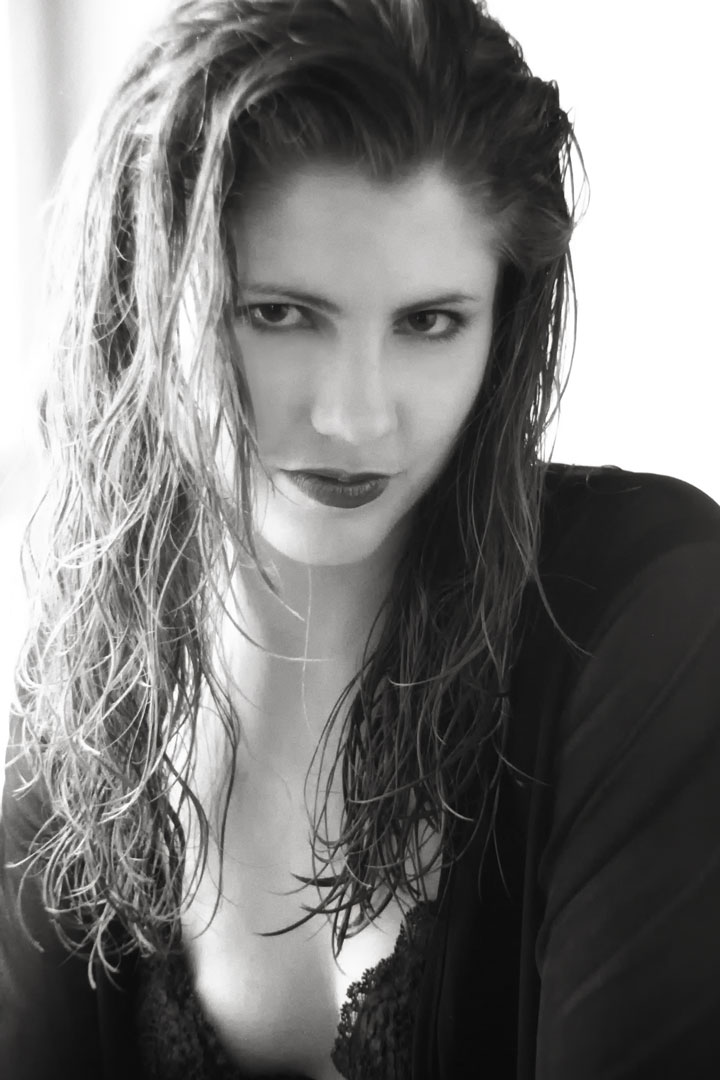Today’s Post by Joe Farace
The whole series is black-and-white, so when I went to shoot one of the women I only had black-and-white film with me. She had reddish hair and was a very pretty girl, a nice girl.”— Helmut Newton
 Helmut Newton passed away on January 23, 2004. The Nikon D1 was first unveiled on June 15th 1999 but it wasn’t the first commercially available DSLR. Kodak’s DCS100 was released in 1991. I don’t think Mr. Newton ever shot a digital camera. Most of the time he shot with a Nikon film-based SLR using Kodak Tri-X or Ektachrome color transparency film. In the studio, he used a Hasselblad and Rolleiflex.
Helmut Newton passed away on January 23, 2004. The Nikon D1 was first unveiled on June 15th 1999 but it wasn’t the first commercially available DSLR. Kodak’s DCS100 was released in 1991. I don’t think Mr. Newton ever shot a digital camera. Most of the time he shot with a Nikon film-based SLR using Kodak Tri-X or Ektachrome color transparency film. In the studio, he used a Hasselblad and Rolleiflex.
These day’s no matter what or who I might be photographing, I’m more than likely to reach for a roll of black and white film. It doesn’t have to be all of the images that get made during a particular photo session; maybe just a few to, you know, see what happens. Maybe that’s why 24-exposure rolls are a good idea and they’re cheaper too. Tri-X 35mm is $10.49 and $8.49 (24 exposures) from B&H as I write this but you never know about film prices these days. (Amazon is selling 36-exposure rolls for $14.99.)
More than likely, based on my recent film shooting experiences, my first choice will be Fujifilm Acros 100 ($12.99 fop the new stuff) but I’m also interested in trying some of the new boutique black and white films, especially Santa Rae* from Finland, it’s “made by elves.” The 1000 ISO seems to be available from several sources, including Blue Moon Camera and Machine, with the 125 ISO version (see below) currently available from Kamerastore in Finland. The price isn’t too bad (€35 or $39.99 for four rolls) but when shipping costs from Finland are added, it breaks my film budget.
 How I made this portrait: Kim might have been my first muse, although I may not have been aware of it at the time. I photographed her in the living room of my former home using available light. The image was slightly underexposed (OK, more than a little) so I used the technique outline in my post Tutorial: Correcting Underexposed Portraits to fix it.
How I made this portrait: Kim might have been my first muse, although I may not have been aware of it at the time. I photographed her in the living room of my former home using available light. The image was slightly underexposed (OK, more than a little) so I used the technique outline in my post Tutorial: Correcting Underexposed Portraits to fix it.
The portrait was made with a Contax 167 MT SLR, similar to the one that I recently acquired along with a Carl Zeiss Planar 50mm f/1.7 lens and Kodak Tri-X film, which was my go-to black and white film back in the film says. Scans were from Kodak’s defunct Photo CD process and were opened on my 5K iMac using Lemke Software’s Graphic Converter that produced the good quality files from a Photo CD disc.
If you would like to send me a roll of film to review or any other stuff that could be used for these posts and my videos you can mail it to: Joe Farace, PO BOX 2081, PARKER, CO 80134